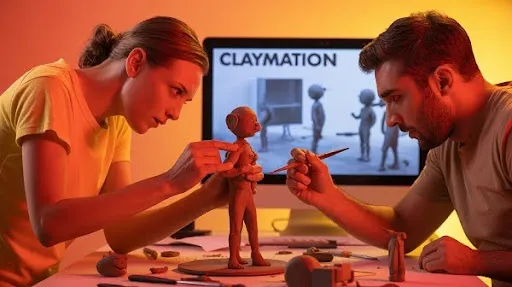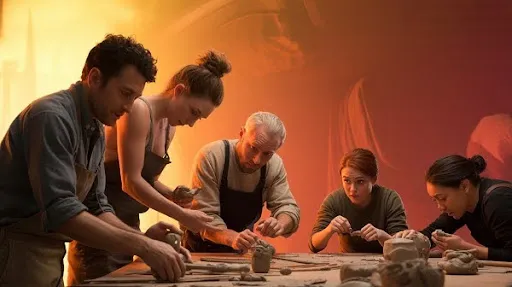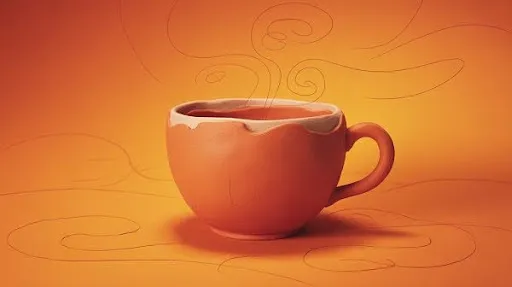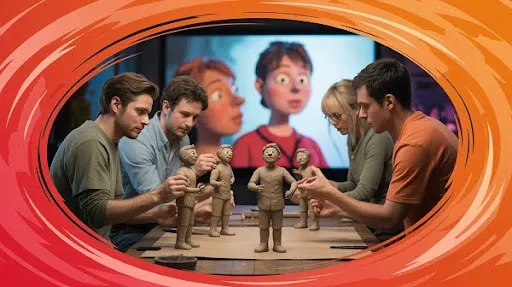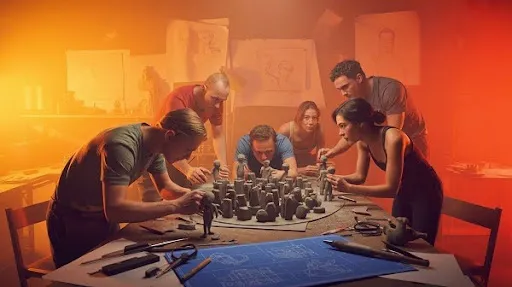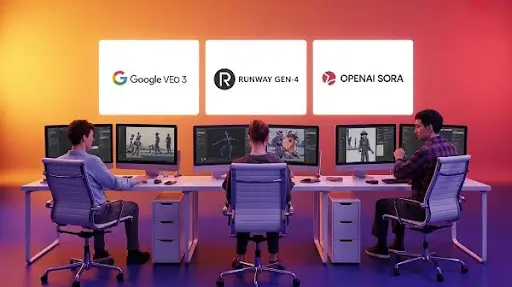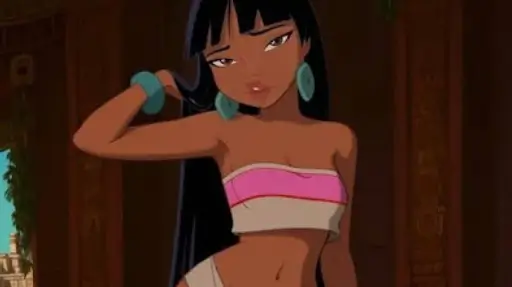Some art forms don’t just tell stories — they pull you into them frame by frame. Every frame of clay animation represents a moment of film captured through a series of steps, including movement, detailed work, and hours of labor, all of which is extremely meticulous.
This is a blend of animation, a story of craftsmanship, and something an artisan would create. Moreover, a tremendous amount of patience is required.
Clay Animation, also known more widely as claymation, has been around much longer than most of us think, and is somehow able to compete with new-wave hyper-realist CGI. Even with innovation, claymation retains a tactile appeal, with its textures, imperfections, grit, and sincerity that go beyond any sort of computer innovation.
Copies of it exist in the form of quirky television children’s shows, and even at the opposite extreme, ghoulish works of gothic art that leave a mark forever in the memory of those who have viewed them.
According to one report, the global animation market is valued at more than USD 460 billion in 2025, and it is only going higher.
By the end of this guide, my aim is to ensure you grasp the reasons and the how behind this painstakingly slow process, and why it still holds the fascination of filmmakers and audiences alike in the year 2025.
Along the way, we’ll examine the basics of claymation animation, its challenges, boundless benefits, and how to make claymation movies.
What is Clay Animation?
In this form of cinematography, the characters and props used in the animation are made with soft materials such as plasticine, a sort of clay. These props are captured and made frame by frame in a process referred to as stop motion.
With each frame, the models are altered a fraction to ensure a realistic semblance of motion. The models are made to look as though they are in motion when the frames are played back.
The magic lies in its tangibility. Every fingerprint, every dent, and every sculpted line adds personality. Unlike digital animation, there’s no perfect smoothness — and that’s exactly the point.
A Brief Look at the History of Claymation Animation
The history of claymation animation dates back to the early 1900s, with its emergence in short silent films being the primitive form of claymation that we know today. The technique was only used back then for special effects in movies.
Art Clokey was a forerunner in clay animation with his creations Gumby and Pokey in the 1950s, and in the 70s and 80s, Aardman Animations produced The Wallace and Gromit, indicative of their creative period.
Laika, a 21st-century animation studio, blends traditional methods with newer 3D technology for quicker face expression alterations. slow, yet evolving, pace for such meticulous artwork. This continuous handcrafted look is emphasized further by the slow and steady pace of evolution in newer techniques.
How Does Claymation Animation Work?
The process of claymation begins with the selection of the type of clay used in claymation animations, which differs from other forms of stop motion. Plasticine and other non-drying clays are ideal because they allow sculpted figures and characters to remain flexible over long periods of time.
Here’s the basic setup:
- Support the clay figures with a small skeleton of wire or metal, called an armature.
- Sculpt the character or object over the armature.
- Position the model on the set.
- Photograph the model.
- Adjust it slightly — even a fraction of an inch.
- Photograph again.
Repeat this process a few thousand times and then string the images together as a progression. The motion appears more lifelike when the transitions are smoother.
Different Types of Clays Used in Claymation Animations
Selecting the appropriate clay is critical to a project’s success—and, in this case, the wrong kind can lead to destructive failure. Moreover, every project has a set optimal temperature for heating the plasticine, and failing to reach this temperature can lead to disastrous failure.
Popular clay types include:
- Plasticine Clay – Oil-based, doesn’t dry out, stays soft. Ideal for long shoots.
- Polymer Clay – Can be baked to harden certain pieces, useful for props.
- Modeling Clay – Cheaper but prone to cracking if used for long periods.
- Custom Clay Blends – Many studios create proprietary mixtures for specific textures or colors.
The Basics of Claymation Animation: Step-by-Step
While each project has its quirks, most follow these stages:
1. Storyboarding and Script
A storyboard is very useful as it lays out every clay scene and prepares the animator for set construction, lighting, and the number of shots.
2. Character and Set Design
To ensure the structures can last under varying temperatures, they are built and sculpted with care. To control temperatures, heat-emitting bulbs are avoided, while natural light is used to illuminate the set.
3. Frame Rate Decisions
The frame rate for clay animation is set at 12 frames per second, which is significantly more forgiving compared to the 24 frames per second used in feature-length films.
4. Shooting
A head tilt, a blink, a step — every movement is subtle and every change captured through photography. Any continuity error can force an animator to redo hours of work.
5. Editing and Audio
Editing is the last stage of production, where the sound effects, dialogues, and music tracks are synchronized and incorporated. Sequencing the compiled images is one of the last tasks to be completed.
Pros and Cons of Using Claymation
Like any art form, claymation has its strengths and drawbacks.
Pros:
- Unique visual style that stands out from CGI.
- Tangible textures add authenticity and charm.
- Highly versatile for different genres.
Cons:
- Extremely time-consuming clay animation process.
- Models can deform under lights or repeated handling.
- Requires significant space for sets and equipment.
Benefits of Using Claymation
The effort pays off. Here’s why many filmmakers still choose claymation:
- Visual Uniqueness – No two claymation films look exactly alike.
- Tactile Warmth – Physical forms evoke stronger emotional responses.
- Timeless Appeal – From the 70s TV shows to the 2025 short films, claymation retains its timeless appeal.
- Creative Control – Every detail is sculpted, including a character’s grin and a prop’s surface.
Challenges of Using Claymation Animations
Working with clay in animation is rewarding but demanding.
- Lighting Heat – Studio lights can melt clay, creating sagging, slumping, or unintentional movement.
- Model Fatigue – Repeated handling wears down fine details.
- Set Stability – Any accidental bump can ruin hours of progress.
- Time Investment – Even a short film may take weeks or months.
Claymation in Video Games
While less common than in film, claymation in video games has a cult following. Titles like ClayFighter and The Neverhood use photographed clay models integrated into gameplay. This gives games a handcrafted, almost surreal feel that digital-only graphics can’t replicate.
Indie developers are planning this for 2025 as a statement against hyper-realistic visuals that are usually offered by 3D animation services. After this revival, the approach will be nostalgic.
Why the Pace is Part of the Magic
On paper, the idea of taking hundreds of hours to create a few minutes of footage sounds impractical. In practice, that’s part of the charm.
The slow process forces attention to detail, allowing animators to create nuanced performances in their characters. You’re not just animating — you’re sculpting a performance one frame at a time.
How to Make Claymation Movies (Beginner’s Outline)
If you want to create your own claymation film, here is an overview of the steps you should follow.
- Pick a Short Story – Keep it under two minutes for your first attempt.
- Gather Supplies – Clay, armature wire, camera, tripod, lights, backdrop.
- Build Characters and Sets – Make sure your models can hold poses.
- Plan Shots – Create a shot list or storyboard.
- Shoot Methodically – Keep movements small and consistent.
- Edit and Add Audio – Free or inexpensive software can handle basic edits.
Even a beginner project can teach you how much patience this art form demands.
Notable Clay Animation Films and Shows
Each of these examples is a part of clay animation history and offered something new, creating pieces that changed mainstream culture and inspiring future clay work. The history of clay animation is less well-known, but it is filled with many iconic works.
Coraline
Laika Studios is a modern animation studio specializing in claymation, and in the ‘modern era of claymation’, received acclaim for their work, as ‘attention to detail’ is a hallmark of the studio. The studio’s mastery in blending clay animation and 3D printing is celebrated for their work in ‘Coraline’—a dark-fantasy animation of remarkable creativity.
Wallace and Gromit: The Wrong Trousers
Through the use of humor and animation, Aardman Animations has, once again, perfected the art of storytelling in short films. The animation humor reaches perfection level because of the meticulous attention to detail, such as the animated character’s faces and movements, and the setting of the film.
Shaun the Sheep
What began as a side character in A Close Shave became a global hit. With almost no dialogue, the humor relies on physical gags and clever clay animation staging — proof that strong visual storytelling can transcend language barriers.
The Nightmare Before Christmas
Tim Burton’s gothic musical is arguably one of the best films to watch over the holidays. It is somewhat a stop motion film as the aesthetic is in clay, which makes the characters charming and complements the whimsical and spooky tone of the movie.
Corpse Bride
Burton’s Corpse Bride illustrates the balance of romance and dark themes in clay animation. The elaborate set features and exaggerated character proportions are ideal for this medium.
Chicken Run
With entertaining wit and a hint of mesmerizing storytelling, the film has etched history as the highest-grossing stop-motion film. Proving that clay animation can meet stunning commercial appeal, it also became the first blockbuster in the world to be clay animated.
Why Clay Animation Still Captivates Audiences in 2025
Amid a bustling market filled with CGI, clay animation fades into the background. The unique charm of this art style lies in the imperfections, which are deeply human and far from the idealistic tech polish in today’s industry.
- Tangible Characters – Viewers can almost feel the materials on screen.
- Visible Craftsmanship – The work behind each frame is evident, which creates respect for the art.
- Distinct Visual Identity – Clay animation projects rarely get mistaken for anything else.
Unlike polished, computer-generated films, the sheer authenticity of the painstakingly crafted details in clay animation captivates modern film viewers in a way that is uniquely appealing.
Clay Animation Beyond Film: Advertising, Music Videos, and Education
Clay animation’s visual charm makes it useful beyond traditional cinema.
- Advertising – Brands use claymation for quirky and unforgettable marketing strategies.
- Music Videos – Surreal and artistic storytelling has been adopted by bands through the use of clay animation.
- Education – Both teachers and students utilize it to visualize and simplify complicated concepts.
Its adaptability keeps it relevant, even in industries where fast production cycles are the norm.
The Cultural and Artistic Significance of Claymation
Clay animation is more than a filmmaking technique — it’s a cultural artifact. It represents:
- The persistence of hands-on artistry in a tech-heavy industry.
- The value of slowing down to focus on detail and craftsmanship.
- A bridge between older animation traditions and modern storytelling methods.
It reminds audiences that great stories can come from patience and skill, not just advanced software.
Future of Clay Animation and Beyond
Internal tools, such as AI-assisted tools and motion-control rigs, and external tools, such as 3D printers, are accelerating the work that goes into clay animation. While motion-control rigs create smoother camera movements, 3D printers aid in producing certain aspects of a project.
Clay animation’s passion for physical modeling and frame-by-frame shooting is impossible to diminish. In a world that is increasingly dominated by digital content, the enduring allure of handmade artistry preserves the popularity of claymation.
Frequently Asked Questions
Q1: What is claymation?
Claymation is defined as a form of stop motion animation using the non-drying plasticine model clay to create characters and props that are shot in a frame-by-frame manner.
Q2: How long does it take to make a claymation movie?
The relative amount of time set aside for a project varies widely depending on the details and the complexity of the chosen topic. A feature-length project could take years if it is complex, and short films could take weeks to months.
Q3: What are the challenges of claymation?
Time and resource-intensive work is required to maintain thousands of frames. Additionally, heat from lights softening clay, unintentional movements disrupting a shot, and posing difficulties with continuous shots are challenges.
Q4: Can clay animation be done at home?
Yes. Many beginners start with small sets, basic clay, and a smartphone camera. Patience is the biggest requirement.
Q5: What types of clay are best for clay animation?
While plasticine is the most flexible and resistant to drying, polymer clay is best for detailed props that need to maintain their shape and are durable enough to be shaped artisanally.
Q6: Is clay animation still popular in 2025?
Clay animation is still embraced by the indie film sector, the educational sector, and the studios that prefer the handmade look and feel.
Final Word
Like all animation disciplines, clay animation is not a straightforward undertaking. It requires acute attention to detail, time, devotion, and the ability to slowly build up footage one second at a time. Working with this medium is the most gratifying.
Despite the overwhelming variety of animated films and features, these studios can take pride in knowing that their work stands out in the increasingly monotonous digital world. These films resonate with the audience on a deeper level and tell a more emotionally relatable story, untouched by mechanization and the burden of algorithms.
Currently, clay animation remains the number one choice for brands, filmmakers, and animators, for its ability to create poignant and emotionally impactful visuals. Social cred is a must in 2025, and clay animation might just be the most potent weapon in your creative arsenal.
If you are looking for top-notch claymation services, then get in touch with Prolific Studio today, one of the best animation studios in Hollywood.
Related articles:

